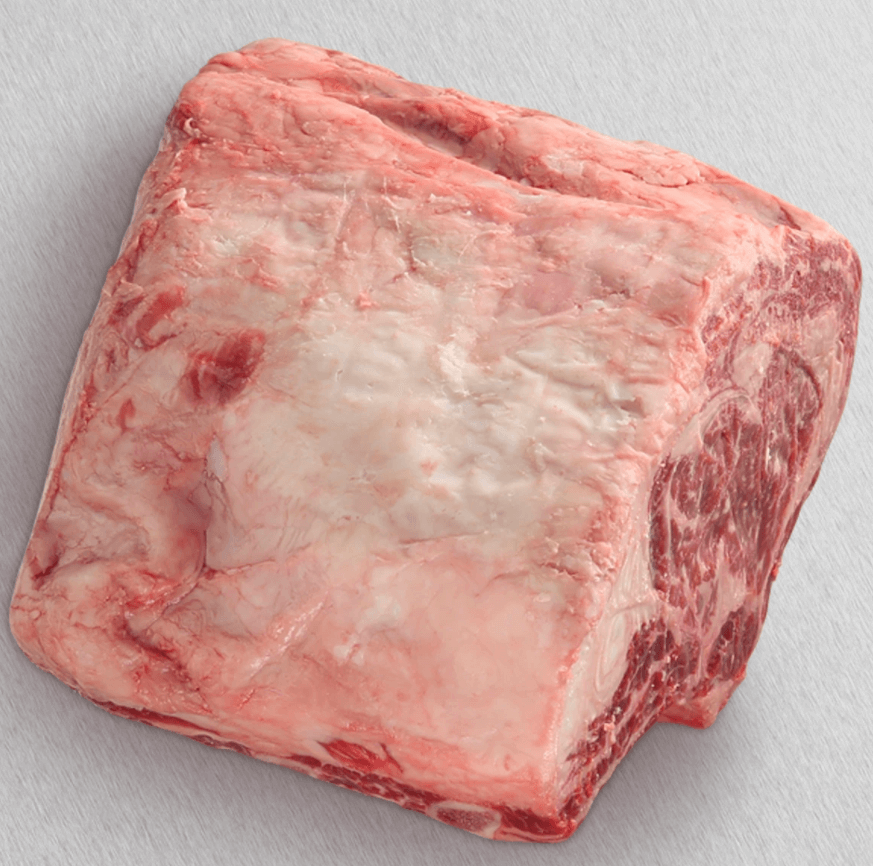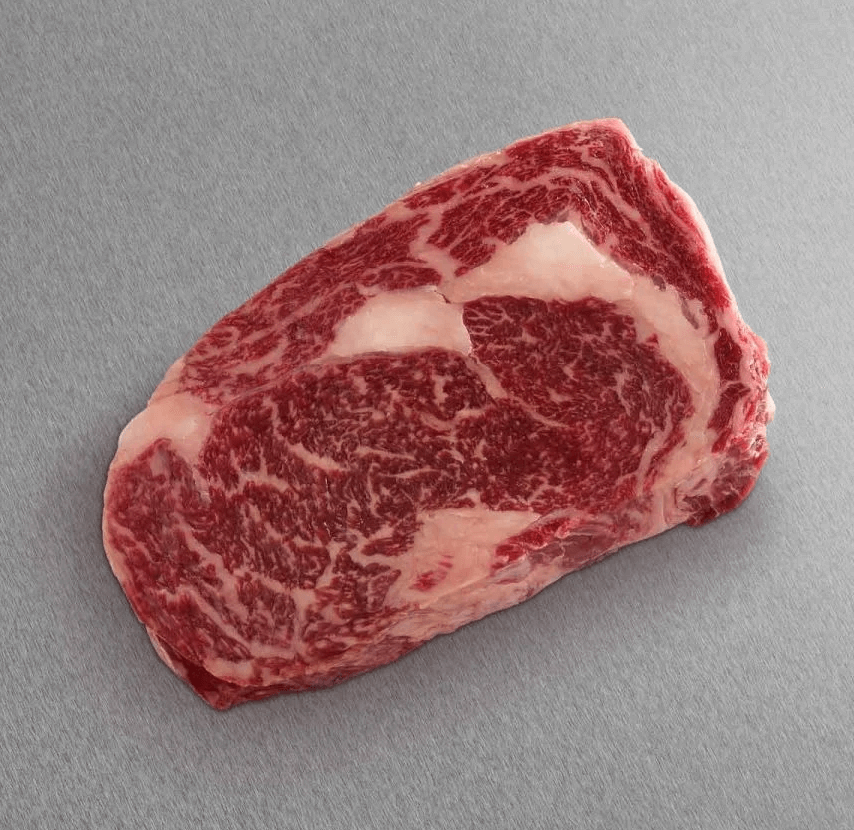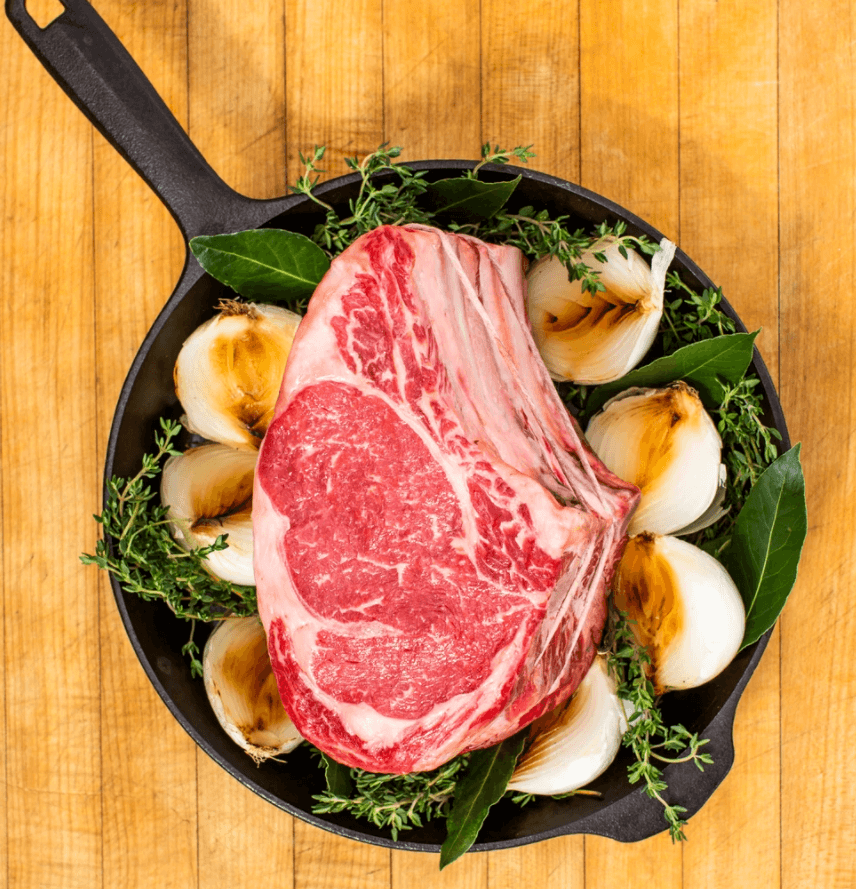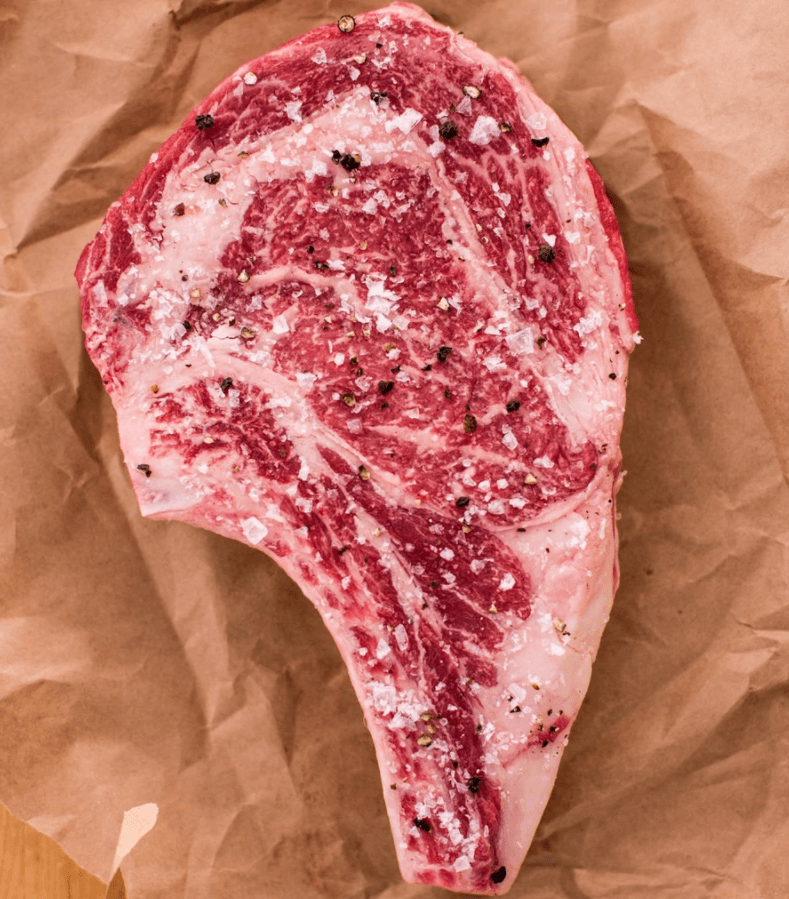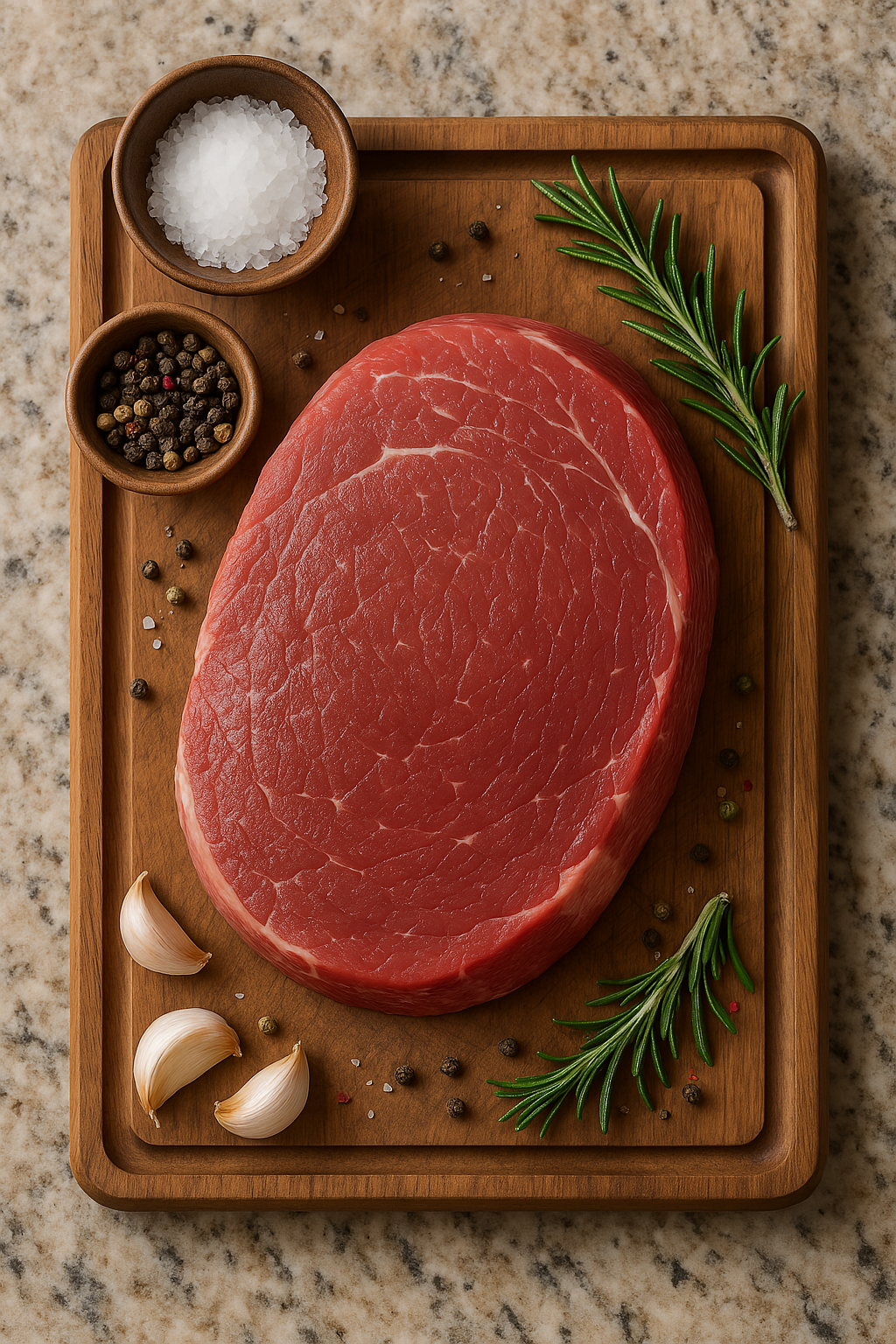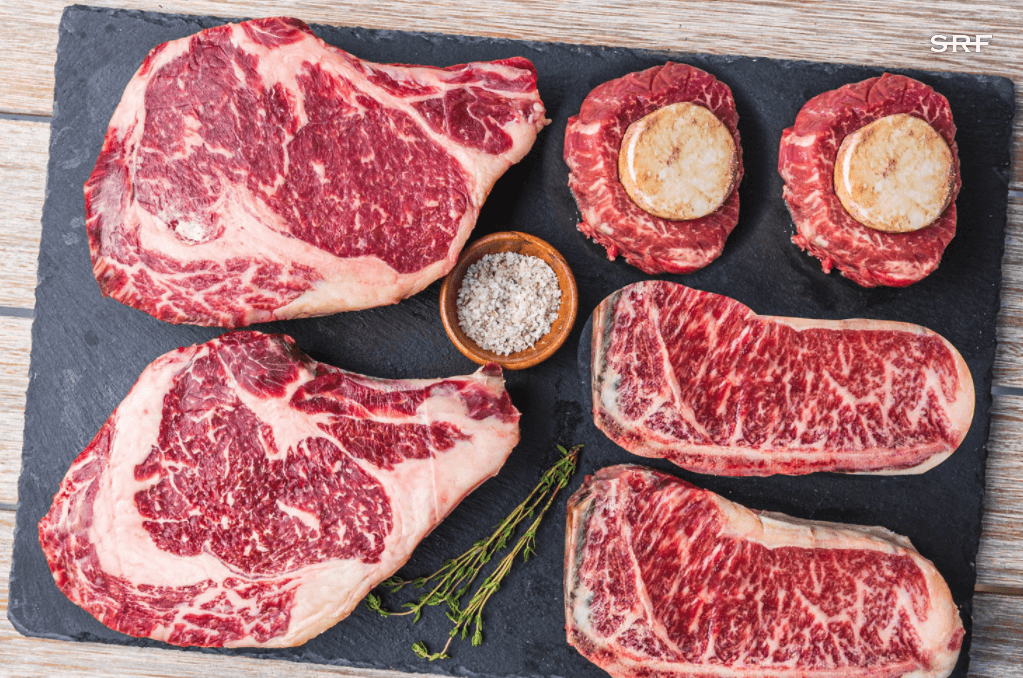Despite the similar sounding names, and also despite the fact that they come from the same portion of the animal, prime rib and ribeye actually refer to two quite different cuts at your local butcher!
But even with the differences, there are quite a few similarities too. People talk about the two different cuts like they’re drastically different when in fact they come from the same primal cut of the animal.
Confused yet? That’s ok – in this post, we’ll go over all of the similarities and differences between prime rib vs ribeye and clear up the confusion. Everything you need to know is right here! That includes differences in the cuts of meat, how to cook them, and much more.
Prime Rib vs Ribeye – What’s the Difference?
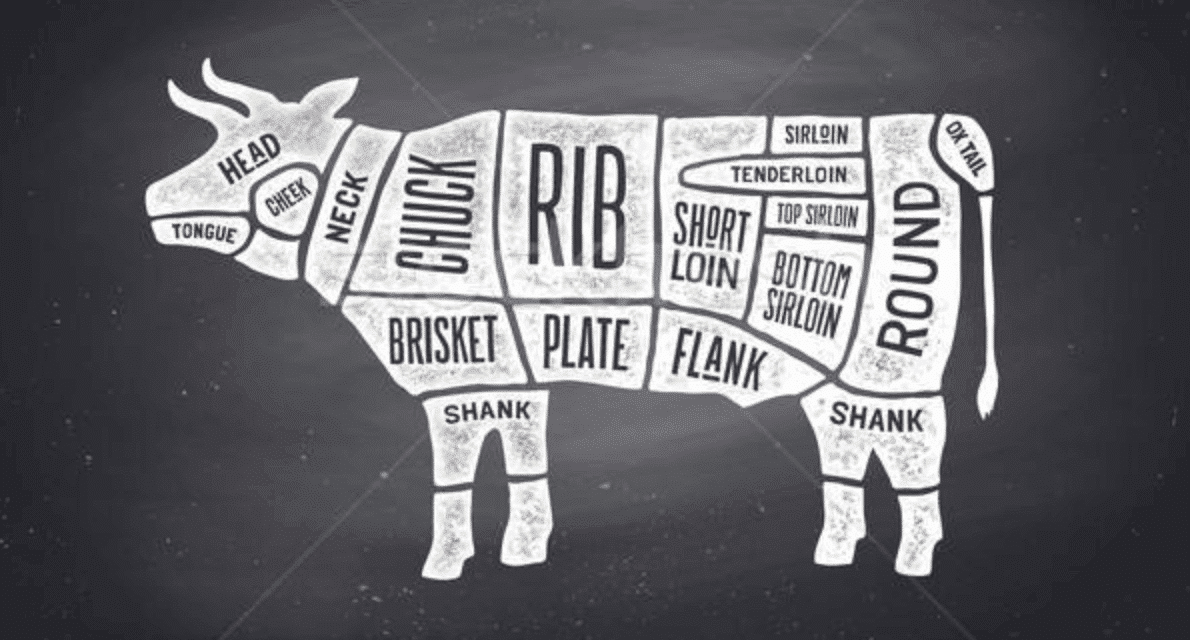
Prime rib and ribeye are very similar. Both a prime rib and a ribeye come from the rib section of a cow. Each is differentiated from one another by the cut, and each is used for a different purpose.
Essentially, prime rib is an entire roast section that’s cut from the rib section of the cow, and the ribeye steaks are thick cut slices of the prime rib roast.
What is Prime Rib?
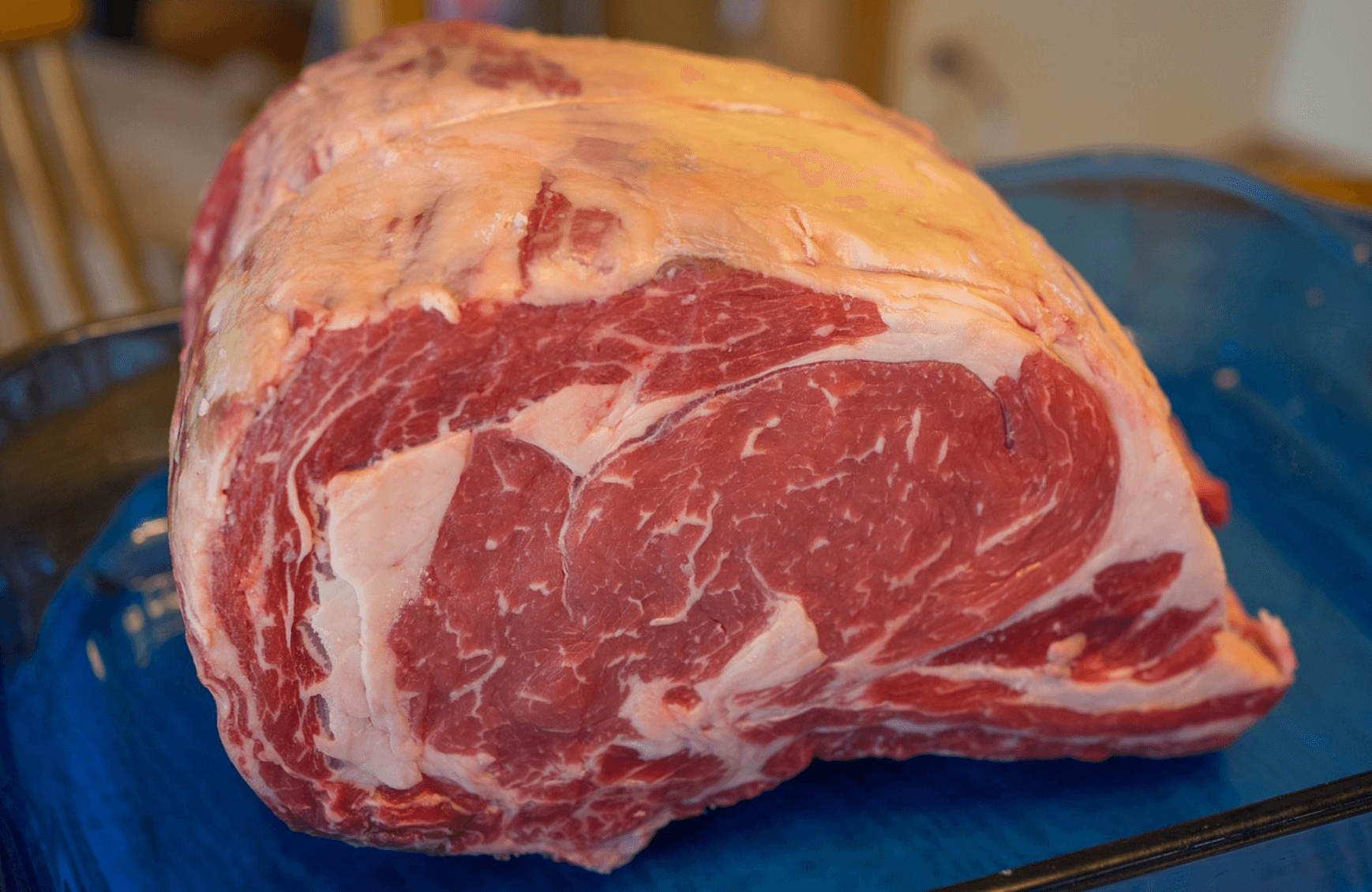
Prime rib comes from the primal rib section of the animal and is sometimes known as a standing rib roast. They are larger cuts than a ribeye because they include the ribeye itself and typically a large piece of bone.
To an untrained eye, a prime rib cut kind of just looks like a big chunk of meat!
The word “prime” is an important one – and I want to clarify what it means. As you’d expect, the “prime” in prime rib implies that a prime rib is cut from the best part of the rib.
That is, the portion of the rib that has the heaviest and best marbling, which will lead to incredible flavors and delicious results.
I should also point out that the word “prime” does not imply USDA Prime Beef – so if that’s what you’re looking for, be sure to make sure the grading of the beef you purchase USDA Prime approved.
What is Ribeye?
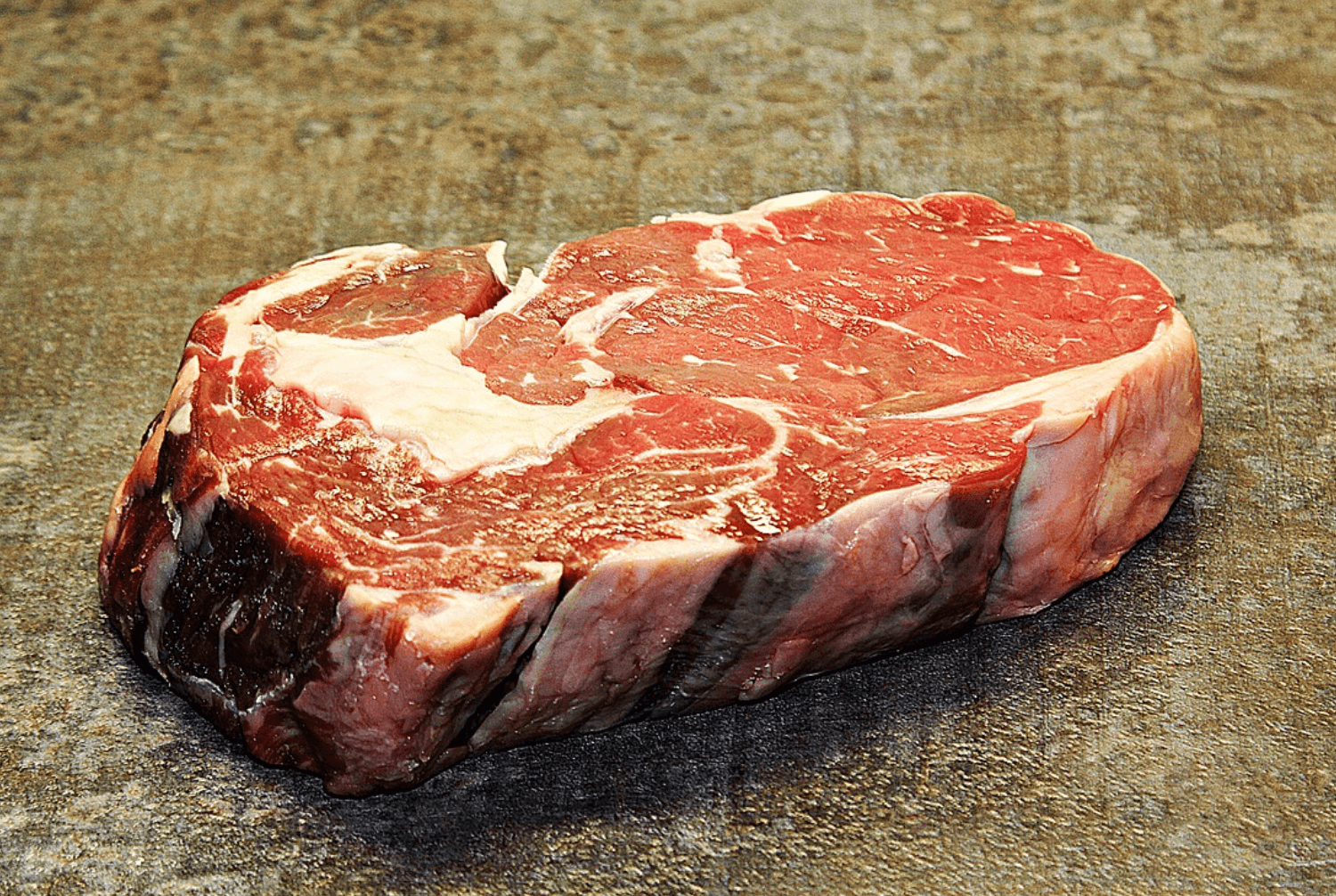
Ribeye also comes from the primal rib area of the cow and is a smaller cut than a prime rib. A ribeye is a steak cut, not an entire section of meat like a prime rib cut is.
Ribeye steaks can either be boneless or include a small piece of bone for what is known as a bone in ribeye.
Ribeye steaks that are cut from the prime rib section of the animal are generally of the highest quality. That’s because of the marbling and fat content associated with this cut.
Ribeye steaks can also be cut from a less quality portion of the rib that features more muscle or less fat content. Also, ribeye steaks are cut before the roast is cooked.
Pro tip – if you’re lucky enough to have a quality butcher in your area, ask them if they ever have a ribeye cap steak cut on hand. It’s incredibly flavorful, robust, and all around one of the best cuts of steak you can eat.
Prime Rib vs Ribeye – Flavor Profile
To be honest, you won’t find any major flavor differences between prime rib and ribeye. That has to do with the fact that each cut comes from the same section of the animal.
Both have rich, robust flavor profiles that embody what you think a delicious steak dinner should be.
Now, the prime rib cut generally contains more bone and fat than a ribeye. Both of these factors enhance flavoring when it comes to steak, so because of this you could probably give prime rib a slight nod over ribeye in terms of flavor. A bone in ribeye will obviously also feature enhanced flavors compared to a bone out ribeye.
Prime rib is also a little more versatile flavor wise in the sense that you can be a little more exploratory in how you cook it. Because of this, you can end up with variations in flavor of your prime rib by sear, broil, sous vide, or however else you chose to prepare.
Note – Did you know that what you drink can have a big time effect on how your prime rib or ribeye tastes?
Drinking a properly paired wine will make your food taste better than if you drank a wine that’s a poor pairing or a simple glass of water. Check out our guide to which wines to pair with steak right here.
How to Cook Ribeye
On that note, let’s compare how to best cook prime rib vs ribeye. Ribeye is most often cooked like a steak – traditionally that means on a grill or cast iron with a sear or reverse sear method.
There are tons of steak seasonings out there, but my personal preference is just to use a tiny bit of olive oil, salt, and pepper.
Pretty much no matter what you do will be delicious, but the goal is to create a delicious crusty outside with the sear. The fat and marbling on the inside of the steak will melt and cook the inside to keep it juicy and tender.
How to Cook Prime Rib
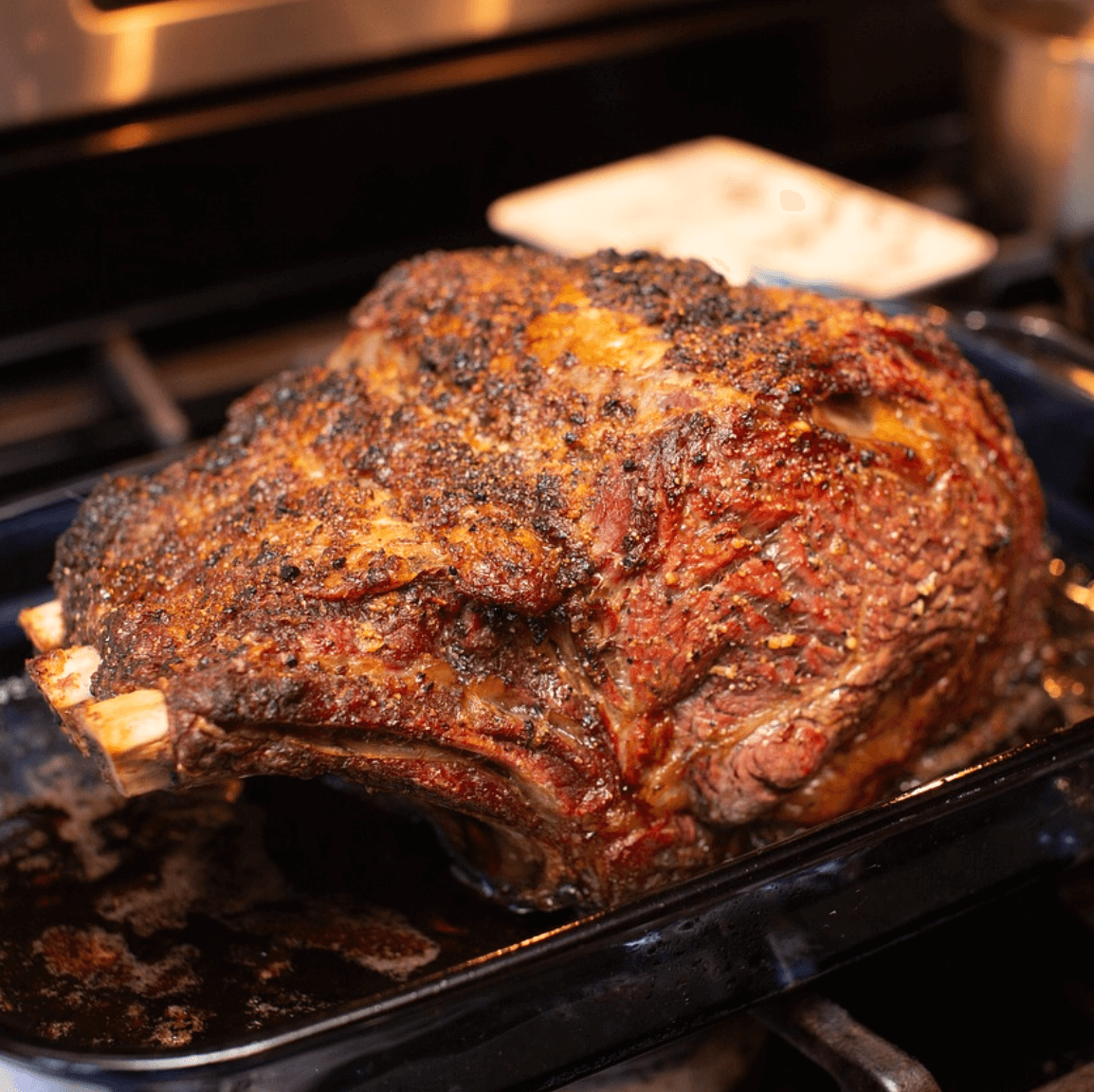
Check out our smoked prime rib recipe for the ultimate guide on how to prepare prime rib!
Prime rib on the other hand, is typically slow roasted but has a bunch of different options when it comes to how to prepare it.
The most popular way to cook prime rib is to season with salt and pepper and slow roast in the oven on low heat until it’s almost reached your desired internal temperature.
From there, you can crank up the heat to crisp and sear the outside and complete the job. After you pull it out of the oven, let it rest for at least 15 minutes before serving.
It’s also possible to cook a prime rib roast on the grill, sous vide, or in a crockpot as well!
Price Differences
When it comes to pricing, it’s probably best to compare on a price per pound basis. If you look at total cost, a prime rib will almost always be more expensive than a ribeye simply because prime rib is a bigger cut of meat.
Prime rib is actually pretty hard to find at a grocery store. You’re more likely to find it at a butcher’s shop, specialty store, or out at a restaurant.
Despite prime rib being a more robust, generally higher quality cut, it’s actually often less expensive on a per pound basis than a ribeye.
That’s because a lot less work needs to go into preparing a prime rib cut. With a ribeye cut, more precision, time, and energy is needed to get to the final cut. Especially when it comes to bone out ribeye.
If you’re out at a restaurant, it really just depends on where you go as far as which is more expensive between prime rib vs ribeye. I’ve been to steakhouses where prime rib is more expensive per pound, and I’ve been to others where ribeye is more expensive per pound.
Texture
Texture wise, you aren’t going to find a ton of differences in either cut until after they’ve been cooked. Pre cooked, the muscle and fat content in each cut is super similar so it is hard to tell the difference.
Generally speaking, prime rib will have slightly more fat content and marbling compared to ribeye and therefore will be slightly more tender. Prime rib also ends up more tender because it’s typically cooked low and slow.
The texture difference is really noticeable post preparation. Since prime rib is typically slow cooked and a ribeye seared, the end result and tenderness will naturally be different.
Because of this, ribeye steaks will tend to be a little tougher and prime rib roast will be on the more tender side.
Where to Find Prime Rib and Ribeye
Most grocers and almost all butchers regularly carry ribeye steaks, although it depends a little bit on where you live.
Prime rib is a little bit harder to find on a normal day than ribeye. Odds are you won’t find any at your local grocery store unless it’s around holiday time when smoked prime rib is popular.
If you live near a good butcher, they may be in stock of prime rib year-round but it’s a good idea to call in advance to make sure.
Nowadays, you can also pretty easily source prime rib and ribeye online. If you’re looking for high end steaks or roasts for a holiday party or big occasion, our go-to online purveyor is Snake River Farms. Their cuts are pricey but definitely a treat.
Boasts the highest level of marbling offered in Snake River Farms' prestigious line of American Wagyu prime ribs.
I can also personally attest to the quality of their steaks, as I’m a regular customer when it comes to their Wagyu ribeyes – it’s my go-to celebratory steak!
Snake River Farms' top of the line ribeye steak is hand cut to 1.5" thick. Over 1,800+ 4.5 star reviews.
The other online option we like to recommend is Porter Road. They deliver some of the highest quality beef on the internet – steaks and roasts alike. Their prime rib is typically only available around the Holidays.
But their steaks are more likely to be available year-round.
Wrap Up
I hope this guide has helped to educate you on all of the similarities and differences between prime rib vs ribeye!
At the end of the day, you can’t go wrong with either – and my mouth is watering just thinking about the next time I’ll get to have one of these delicious cuts.
People like to talk about prime rib and ribeye like they are to vastly different foods. The reality is a lot simpler.
Since they come from such a similar portion of the cow, when it comes to texture, preparation, flavor, and price – they are quite similar.
But they are different enough that it’s good to know what the differences are. There are for sure some situations where a ribeye steak is a better choice than a prime rib, and vice versa.
Mastering both prime rib and ribeye is something that all grill masters should strive for!
Looking for more steak guides? Check out our other resources here:
Discover more from Own The Grill
Subscribe to get the latest posts sent to your email.


